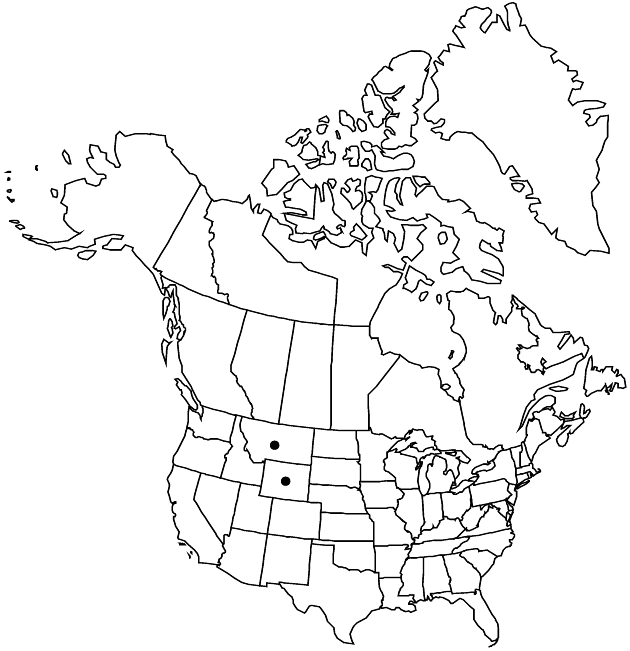Difference between revisions of "Artemisia porteri"
Madroño 11: 145. 1951.
FNA>Volume Importer |
FNA>Volume Importer |
||
| Line 34: | Line 34: | ||
-->{{#Taxon: | -->{{#Taxon: | ||
name=Artemisia porteri | name=Artemisia porteri | ||
| − | |||
|authority=Cronquist | |authority=Cronquist | ||
|rank=species | |rank=species | ||
| Line 49: | Line 48: | ||
|publication year=1951 | |publication year=1951 | ||
|special status= | |special status= | ||
| − | |source xml=https://jpend@bitbucket.org/aafc-mbb/fna-data-curation.git/src/ | + | |source xml=https://jpend@bitbucket.org/aafc-mbb/fna-data-curation.git/src/eaa6e58056e40c9ef614d8f47aea294977a1a5e9/coarse_grained_fna_xml/V19-20-21/V19_859.xml |
|tribe=Asteraceae tribe Anthemideae | |tribe=Asteraceae tribe Anthemideae | ||
|genus=Artemisia | |genus=Artemisia | ||
Revision as of 19:22, 16 December 2019
Perennials or subshrubs, (7–)8–14 cm (cespitose), faintly aromatic. Stems 5–8, silver-gray, densely tomentose. Leaves persistent, silver-green, mostly basal; proximalmost blades 3–4 × 1–1.5 cm, 1-pinnately lobed, lobes mostly 2–3 mm wide; blades of flowering stems somewhat reduced, (1–)2–3(–5) × 0.15 cm, mostly entire; apices rounded, faces densely hairy. Heads borne singly or (clustered in 2s and 3s on lateral branches; peduncles 0 or to 5 mm) in paniculiform arrays, (2–)4–9 × 1–1.5(–2) cm. Involucres broadly campanulate, 4–5(–7) × 2–3 mm. Phyllaries (ovate, margins broadly scarious) densely tomentose. Florets: pistillate 8–10 (2–2.8 mm); functionally staminate 22–32; corollas pale yellow, 2.2–4.5 mm, glandular. Cypselae (light brown) ellipsoid, flattened (faintly nerved), 1.5–2 mm, sparsely hairy, glabrous or resinous.
Phenology: Flowering mid–late summer.
Habitat: Barren clay and gravelly soils
Elevation: 1800–2000 m
Discussion
Although Cronquist observed that Artemisia porteri may be an autopolyploid derivative of A. pedatifida, morphologic similarities to northerly cespitose taxa suggest a more complex origin.
Artemisia porteri is in the Center for Plant Conservation’s National Collection of Endangered Plants.
Selected References
None.
